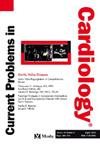sglt2抑制剂与心血管结局的知识图谱:文献计量学分析。
IF 3.3
3区 医学
Q2 CARDIAC & CARDIOVASCULAR SYSTEMS
引用次数: 0
摘要
SGLT2抑制剂最初是为治疗2型糖尿病(T2DM)而开发的,现已越来越多地因其在心血管、肾脏和代谢方面的重大益处而得到认可。本研究进行了系统的文献计量分析,以描述研究趋势,量化进展,并确定SGLT2抑制剂和心血管结局的影响研究。方法:利用Scopus数据库进行全面的文献检索,截至检索日期共检索文献10211篇。包括原始研究文章和评论(叙述性和系统性)。定量指标,如发表数,引文分析和作者被采用。使用网络可视化工具(如VOSviewer)和文献计量软件(带有bibliometrix软件包的R Studio)分析协作网络、关键词共现和主题聚类。结果:分析显示,出版物数量呈显著上升趋势,近年来出现了一个显著的高峰,表明科学家对该主题的兴趣日益浓厚。美国和部分欧洲机构成为主要贡献者,其著名作者和资金来源影响着研究成果。专题分析强调了心血管疾病、心力衰竭、肾脏结局和SGLT2抑制剂作用机制研究的重点。值得注意的是,具有里程碑意义的随机对照试验报告了心血管死亡率、心力衰竭住院率和肾脏疾病进展的显著降低。结论:本研究强调了SGLT2抑制剂对心血管治疗的变革性影响。分析框架突出了领域的拓展,以及转化研究的整合。本文章由计算机程序翻译,如有差异,请以英文原文为准。
Knowledge mapping of SGLT2-inhibitors and cardiovascular outcomes: A bibliometric analysis
Introduction
Initially developed for the treatment of type 2 diabetes mellitus (T2DM), SGLT2 inhibitors have increasingly been recognized for their substantial cardiovascular, renal, and metabolic benefits. This study undertakes a systematic bibliometric analysis to delineate research trends, quantify advancements, and identify influential studies on SGLT2 inhibitors and cardiovascular outcomes.
Methods
A comprehensive literature search was performed using the Scopus database, resulting in 10,211 documents up to the search date. Both original research articles and reviews (narrative and systematic) were included. Quantitative metrics such as publication count, citation analysis, and authorship were employed. Network visualization tools (e.g., VOSviewer) and bibliometric software (R Studio with bibliometrix packages) were used to analyze collaboration networks, keyword co-occurrence, and thematic clustering.
Results
The analysis revealed a significant upward trend in publication volume, with a notable peak in recent years, indicating a heightened interest in the topic among scientists. The United States and selected European institutions emerged as major contributors, with prominent authors and funding sources influencing the research output. Thematic analysis highlighted a focus on cardiovascular diseases, heart failure, renal outcomes, and mechanistic studies of SGLT2 inhibitor action. Notably, landmark randomized controlled trials have reported significant reductions in cardiovascular mortality, heart failure hospitalizations, and progression of kidney disease.
Conclusion
This study underscores the transformative impact of SGLT2 inhibitors on cardiovascular therapy. The analytical framework highlights the expansion of the field, and the integration of translational research.
求助全文
通过发布文献求助,成功后即可免费获取论文全文。
去求助
来源期刊

Current Problems in Cardiology
医学-心血管系统
CiteScore
4.80
自引率
2.40%
发文量
392
审稿时长
6 days
期刊介绍:
Under the editorial leadership of noted cardiologist Dr. Hector O. Ventura, Current Problems in Cardiology provides focused, comprehensive coverage of important clinical topics in cardiology. Each monthly issues, addresses a selected clinical problem or condition, including pathophysiology, invasive and noninvasive diagnosis, drug therapy, surgical management, and rehabilitation; or explores the clinical applications of a diagnostic modality or a particular category of drugs. Critical commentary from the distinguished editorial board accompanies each monograph, providing readers with additional insights. An extensive bibliography in each issue saves hours of library research.
 求助内容:
求助内容: 应助结果提醒方式:
应助结果提醒方式:


